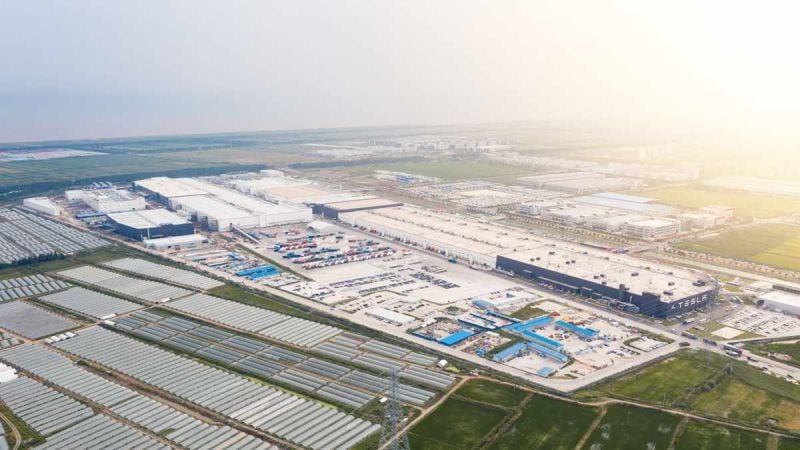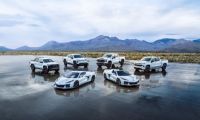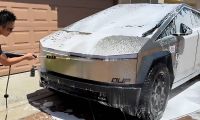20 Million Vehicles Per Year
Tesla is going to have Investor Day in just 3 days, and they are going to talk about the generation 3 platform of vehicles. This is a big component of how Tesla will reach 20 million vehicles per year of production. Let's examine the other ways Tesla will reach this number.
First, let's break down the vehicle sales that will create the 20 million vehicles per year and include future models in this breakdown.
* Model 3: 750,000
* Model Y: 2,250,000
* Model S: 50,000
* Model X: 50,000
* Model 2: 6,000,000
* Cybertruck: 2,000,000
* Tesla Semi: 1,000,000
* New Roadster: 20,000
* Robo van: 300,000
* Robo bus: 200,000
* Model 1: 7,000,000
You may also be interested in:
- Tesla's To Be Made Just Like Toy Cars.
- The staggering economics of the Tesla semi.
- Owning a Tesla Without Home Charging.
How Tesla Will Get There
What will Tesla do to reach these numbers?
Expansion of production facilities
To achieve its production target, Tesla will need to expand its production facilities.
Giga Berlin and Giga Texas continue to ramp. These new factories will increase Tesla's production capacity and enable it to produce more vehicles per year.
Improvements in battery technology
Battery technology is critical to the success of electric vehicles, and Tesla has been at the forefront of developing new and innovative battery technology.
The 4680 battery cells promise to increase range, decrease cost, and improve performance.
Tesla has also been working on improving its battery production processes, which will allow it to produce more batteries faster and at a lower cost.
Launch of new vehicle models
Tesla will eventually release its Model 2 compact car, along with a van and bus. Tesla will ramp the Semi to 1 million units per year. The Cybertruck will begin production and hit 2 million units per year. All these vehicle models will contribute to Tesla's goal of 20 million vehicles produced per year.
Lastly, I believe Tesla will eventually build a Model 1 vehicle - the most lightweight and efficient vehicle for much cheaper markets like India.
Expansion into new markets
Tesla has been expanding into new markets in recent years, including China and Europe with Giga Shanghai and Giga Berlin.
This enables it to produce vehicles locally, reducing transportation costs and increasing production efficiency.
Tesla is planning to expand in Mexico and most likely will also build Giga factories in Korea or Indonesia. Some have even said that Tesla will build in India eventually.
Adoption of autonomous driving technology
Autonomous driving technology has the potential to revolutionize the automobile industry, and Tesla has been a leader in this field, despite reports that they are far behind other companies.
Autopilot is one of the most advanced systems on the market, and Tesla is working on developing fully autonomous driving technology.
FSD will increase the efficiency of Tesla's vehicles, allowing them to drive themselves and reduce the need for human drivers.
Increase in production efficiency
To achieve its production target, Tesla will need to increase its production efficiency.
This means working on improving its manufacturing processes, including the use of robotics and automation.
Tesla has also been working on reducing the time it takes to produce a vehicle, which will increase its production capacity.
Continued investment in research and development
Research and development are critical to the success of any company, and Tesla is no exception.
Tesla has been investing heavily in research and development, including the development of new battery technology and autonomous driving technology. Tesla must invest in these areas to stay ahead of its competitors and achieve its production target.
Tesla has set an ambitious goal of producing 20 million vehicles per year by 2030.
To achieve this target, the company will need to expand its production facilities, improve battery technology, launch new vehicle models, expand into new markets, adopt autonomous driving technology, increase production efficiency, and continue to invest in research and development.
If Tesla can execute on these initiatives, it has the potential to transform the automobile industry and achieve its production target.
In Related News: Production Beta View of Tesla's Cybertruck
Leave your comments below, share the article with friends and tweet it out to your followers.
Jeremy Johnson is a Tesla investor and supporter. He first invested in Tesla in 2017 after years of following Elon Musk and admiring his work ethic and intelligence. Since then, he's become a Tesla bull, covering anything about Tesla he can find, while also dabbling in other electric vehicle companies. Jeremy covers Tesla developments at Torque News. You can follow him on Twitter or LinkedIn to stay in touch and follow his Tesla news coverage on Torque News.












